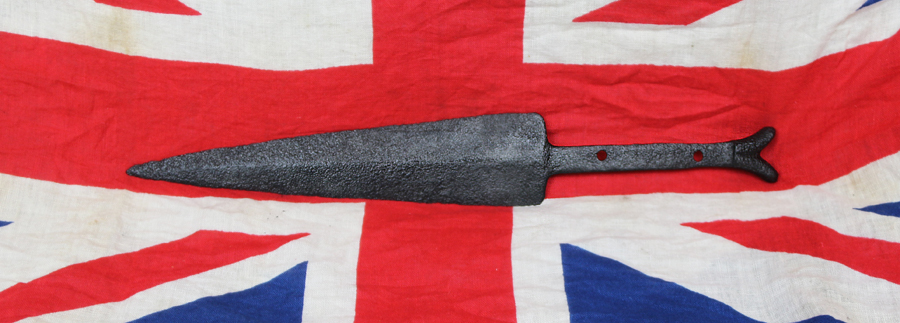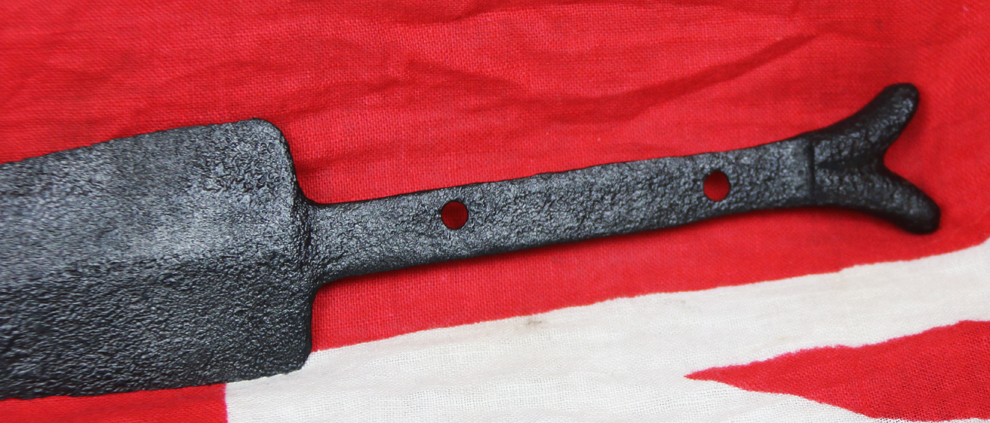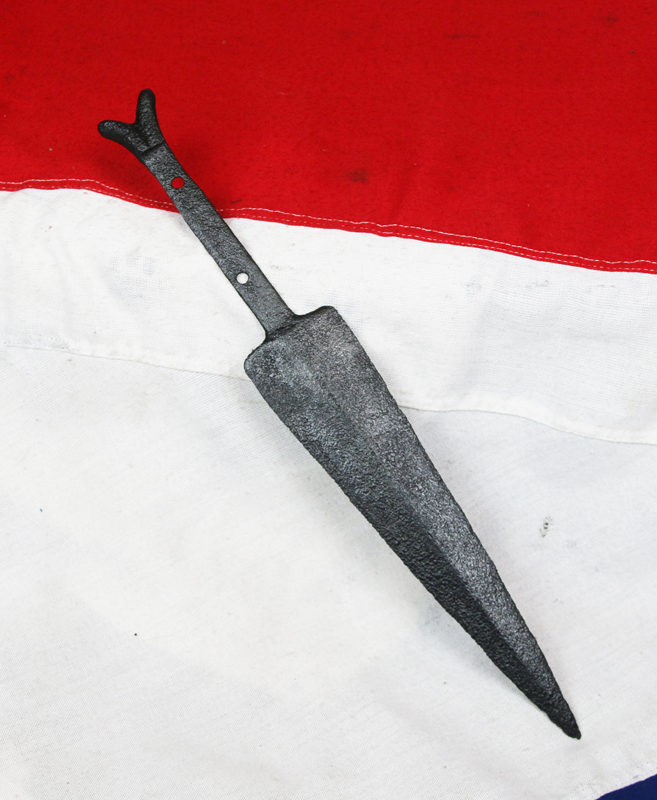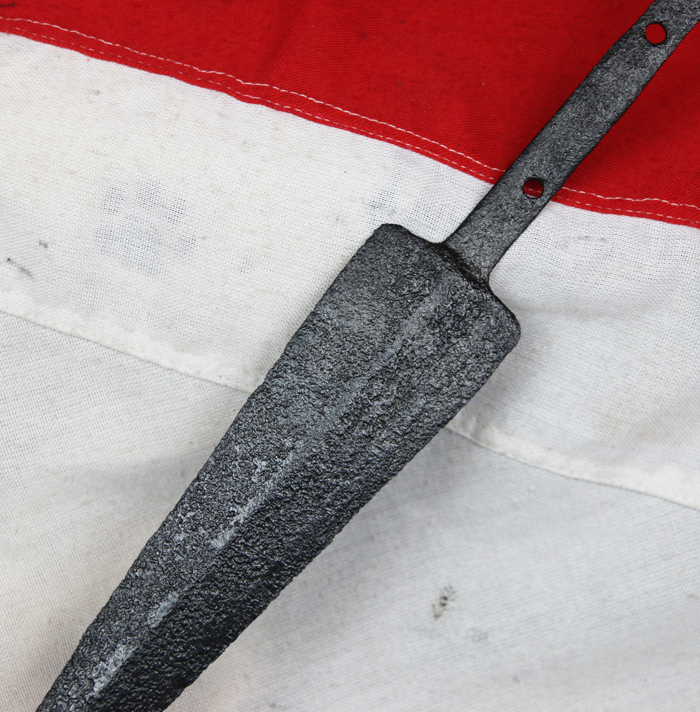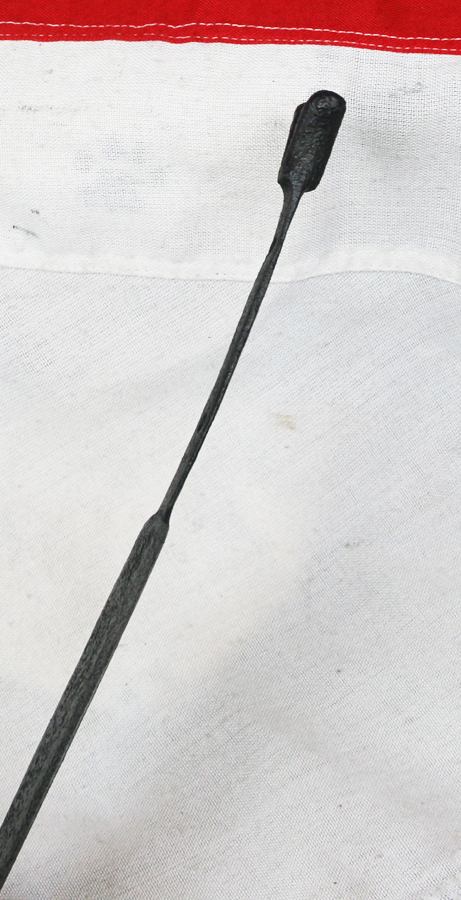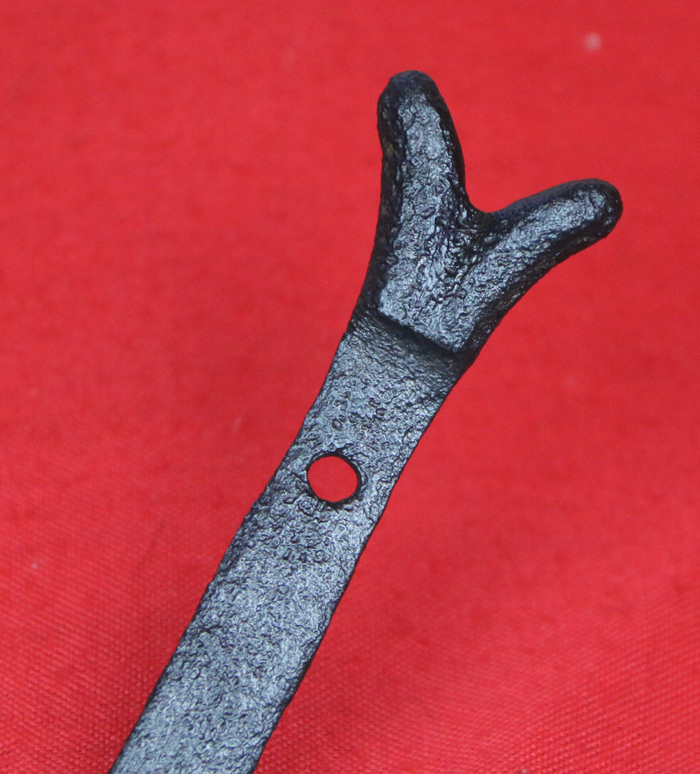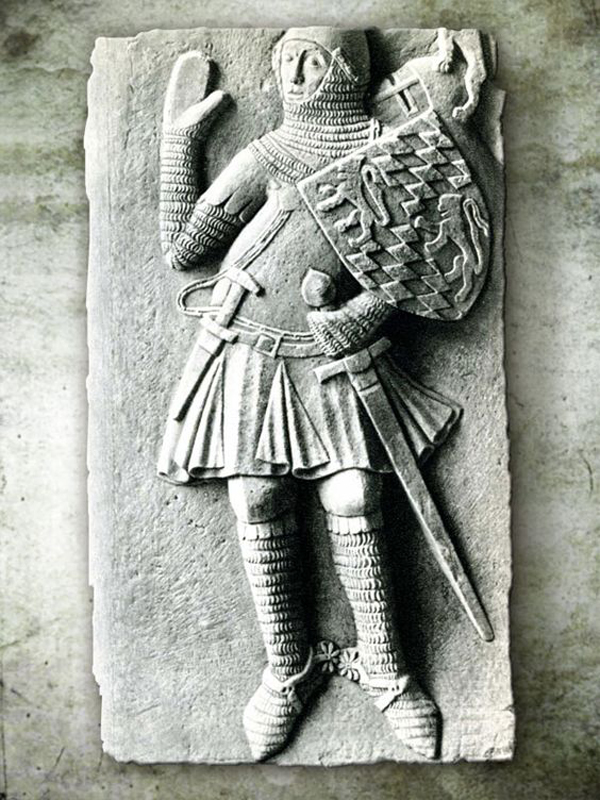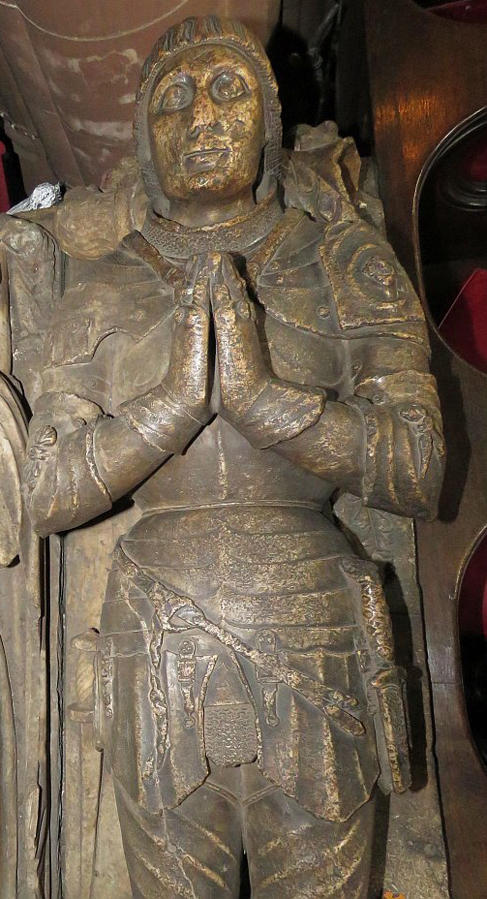A Very Fine & Most Rare, 'Lobed Pommel', 14th-15th Century, Noble's or Knight's Dagger. Used In the Era of The Battles of Crecy and Agincourt . An Original Wide Bladed Medieval 'Baselard' Knight's Dagger
In 1381 Wat Tyler was killed by a near identical 'baselard' dagger by the Mayor of London William Walworth. Wat Tyler (c. 1320/4 January 1341 – 15 June 1381) was a leader of the 1381 Peasants' Revolt in England. He led a group of rebels from Canterbury to London to oppose the institution of a poll tax and to demand economic and social reforms. While the brief rebellion enjoyed early success, Tyler was killed by officers loyal to King Richard II, including the mayor of London, during negotiations at Smithfield, London.
A most rare to survive dagger made of hand forged iron, narrow tanged of of heavy weight, and a very powerful dagger indeed, with a lentoid section triangular blade. The tang is pierced in two places for the riveting of a pair of grip plates towards its lobed pommel. The original grip plates, likely of horn, ivory or wood, would have rotted away, likely centuries ago, which is most usual for all swords and daggers of this era. Those hilts plates that you see present, in museum displays, of similar daggers, and indeed knightly swords, are almost always 19th century replacement grips.
Items such as this were oft acquired in the 18th century by British noblemen touring Northern France and Italy on their Grand Tour. Originally placed on display in the family 'cabinet of curiosities', within his country house upon his return home. A popular pastime in the 18th and 19th century, comprised of English ladies and gentlemen traveling for many months, or even years, througout classical Europe, acquiring antiquities and antiques for their private collections. Depictions of mid-14th-century examples are preserved as part of tomb effigies (figuring as part of the full military dress of the deceased knight). One early attestation of the German form pasler (1341) is from a court document of Nuremberg recording a case against a man who had injured a woman by striking her on the head with this weapon. Several German law codes of the 14th to 15th centuries outlaw the carrying of a basler inside a city. By the late 14th century, it became fashionable in much of Western Europe, including France, Italy, Germany and England. Sloane MS 2593 (c. 1400) records a song satirizing the use of oversized baselard knives as nobleman's fashion accessories. Piers Plowman also associates the weapon with vain gaudiness: in this case, two priests, "Sir John and Sir Geoffrey", are reported to have been sporting "a girdle of silver, a baselard or a ballok knyf with buttons overgilt."
Wat Tyler was slain with a baselard by the mayor of London, William Walworth, in 1381, and the original weapon was "still preserved with peculiar veneration by the Company of Fishmongers" in the 19th century. The point of most weapons was to incapacitate rather than to kill. Prisoners, especially those of high status, could be ransomed for money or leveraged for political influence. But when killing was ordered, as on Henry V's orders at Agincourt, the daggers came out.
Medieval knights often carried daggers designed not for cutting but for punching through the gaps in armour. These were used against incapacitated enemies, as happened to Richard III at the Battle of Bosworth Field. Based on Richard's remains, DeVries believes that his helmet was cut off with daggers, exposing him to the attacks that killed him.
This dagger is 15 inches long overall, approx 12 ozs 350gms in weight, and in fine condition for age, a strong and powerful dagger with just overall aged russetting. Pictures in the gallery of carved stone and marble tombs of medieval knights each bearing a knife such as this or a slight variant. The hilt-grip has long since perished away, as they all are from this era, would have been twin plates of wood, horn or ivory, with small carved quillons or crossguard and rivetted together through the two holes.
As with all our items it comes complete with our certificate of authenticity.
Code: 23018
3750.00 GBP

